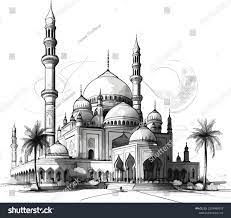Yes, Muslims are Racists too
- Aslam Abdullah
- Jun 2, 2020
- 4 min read
Updated: Aug 3
Racism is alive and robust, regardless of how Muslim intellectuals and leaders have denied its growth for decades. Some 3 million Americans identify with Islam. Sixty-five percent come immigrant communities, mostly from Asia and 40 percent from North and South America, with the majority from the United States.
Black Muslims often described as African Americans are 35 percent of the Muslim population. South Asians, mainly from India, Pakistan, Bangladesh, Sri Lanka, and Myanmar, make 33 percent of the community. Twenty percent from the Arabic-speaking countries and 12 percent are from Southeast Asian, South, and North American and European countries.
A cursory look at the board of Muslim organizations, Masajid, and centers reveals that 93 percent of them comprise non-black Muslims. In relief organizations, the overwhelming majority comes from Arab and South Asian communities. In civil rights organizations, 95 percent of leadership is in the hands of non-black Muslims. Only when ugly incidents like the one we all witnessed in Minneapolis where a white police officer slowly and painfully murdered George Floyd, the immigrant leaders gather some black Muslim leaders to create the impression of a united Muslim American community. Even there, it is the immigrant community leadership that finds the audacity to advise black Muslims on how to deal with racism prevailing in the country.
Most black Muslims live in inner cities, and most immigrant Muslims live in suburbs and middle-class neighborhoods. Most immigrant Muslims have a per capita income higher than the national average, while most black Muslims earn less than the national average.
Muslim relief organizations collect funds from Muslim Americans and spend the bulk of that in foreign countries throwing some dollars here and there among black Muslims.
Most Islamic centers have Imams and Khateeb from Arab and South Asian countries. Only rarely one finds black Muslim scholars or speakers and Khateeb in mosques built mainly by immigrant communities.
A white Muslim khateeb and scholar is more popular in the community than a black Muslim scholar and speaker.
In social gatherings and annual Muslim conventions by major Islamic groups, immigrant Muslims outnumber black Muslims by two to ten. In social relationships, the two communities stay apart, each living within its racial boundaries.
Muslim organizations and Islamic centers spend more resources discussing issues about Muslims elsewhere than addressing the problems of black Muslims in inner cities. Even in February, the month of black history, not many Islamic centers bring up the issue.
Saudi Arabia influenced Salafis to make inroads in the black community to win them by opening its religious institutions in Medina and Makkah to many black Imams. But it was superficial as it did not result in any social relationship among the Arabs and black Muslims.
Not to mention liquor and tobacco shops owned by many Muslims in inner cities where most of the employees came from non-black communities.
None of these issues faced by black Muslims, such as poverty, homelessness, lack of adequate education, unemployment, drugs, and violence, have figured prominently in Muslim American groups.
The gap is widening every year, and there is no serious effort to bring the two communities together at the grassroots levels.
If all this is not rooted in race, then what is it?
Black Muslims make the most resilient community in the world. No other Muslim community suffered persecution as it did in its more than 400 years of history in the Americas. Captured, sold and bought as slaves by merchants including Muslims, humiliated, beaten, raped, and killed, and forced to change their religion, the black Muslims continued to show their commitment to faith by following it in their way within their circumstances.
It is this history that immigrant Muslims have failed to acknowledge and recognize. They did not do it during civil rights when not many Muslim immigrants participated in the March human dignity. Ask an average mosque goer about it, and he or she would draw a blank. In libraries, if there are any, in Islamic centers, there is hardly any book on black Muslims. It is hard to find a black Muslim magazine in any immigrant-run center.
The general attitude of immigrant Muslim leadership reflects insensitive to black Muslim culture and issues. Stereotypes about blacks prevalent among Caucasians are also commonplace among Muslims. Many view blacks as violent, criminals, poorly mannered, drug-influenced, and lacking "true" Islamic knowledge.
As long as this reality continues to exist, racism would continue to exist in mosques and Islamic centers. It is a major crisis that the community faces. One way to overcome this crisis is to train Muslim leaders in anti-racism. Such training is essential for anyone on the board of mosques or Islamic centers. Ninety-nine percent of Muslim leaders and activists do not have this training.
They assume that by citing the Quran on race relations and quoting the Prophet that no Arab has superiority over non-Arabs and no white is superior to blacks, they might hide the latent racism that community lives every day.
We have to acknowledge that racism is a significant issue in the Muslim community, and without a leadership training in anti-racism, we will not conquer it internally. We might keep on showing that we are against racism while wearing the mask of Islam and hiding behind God and his messenger.



Comments